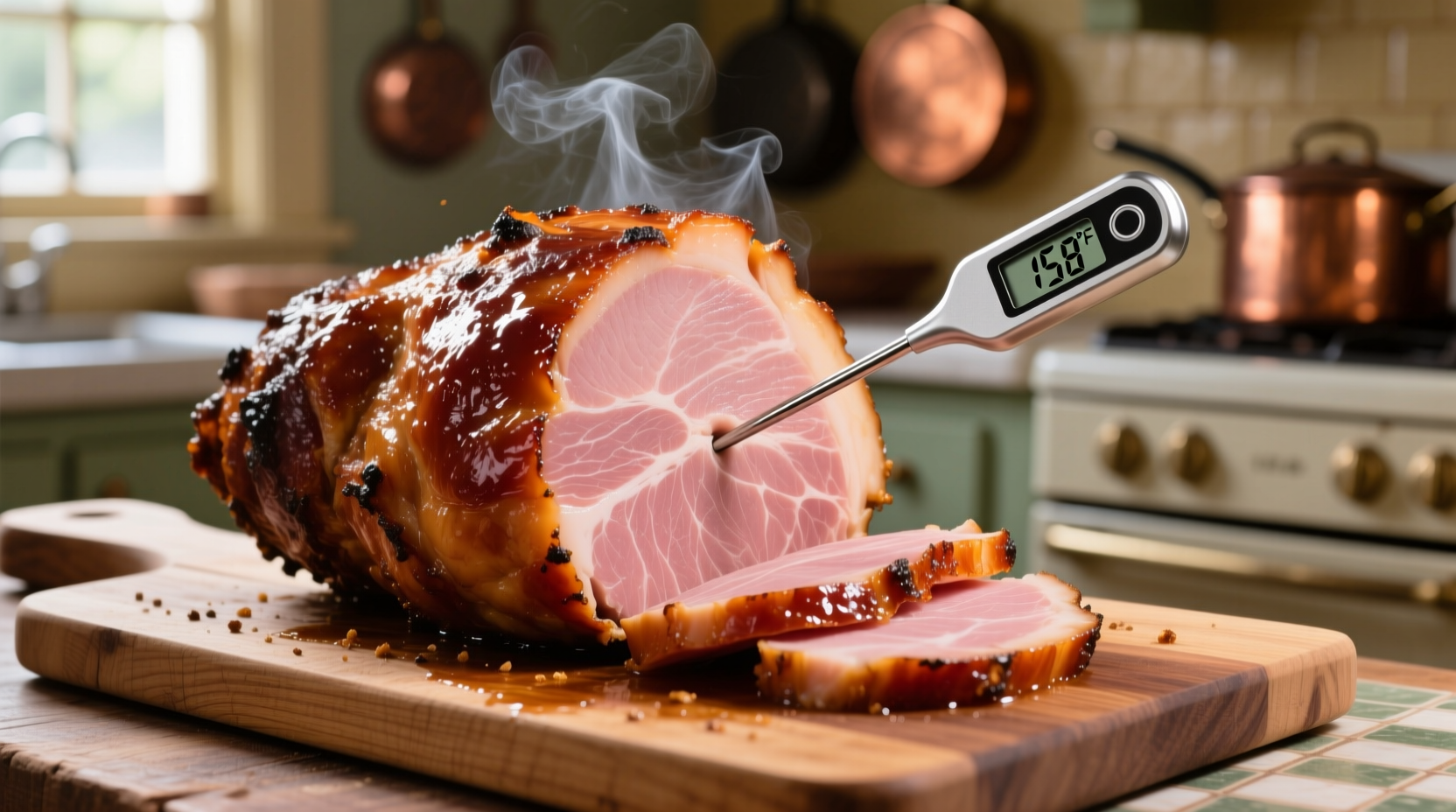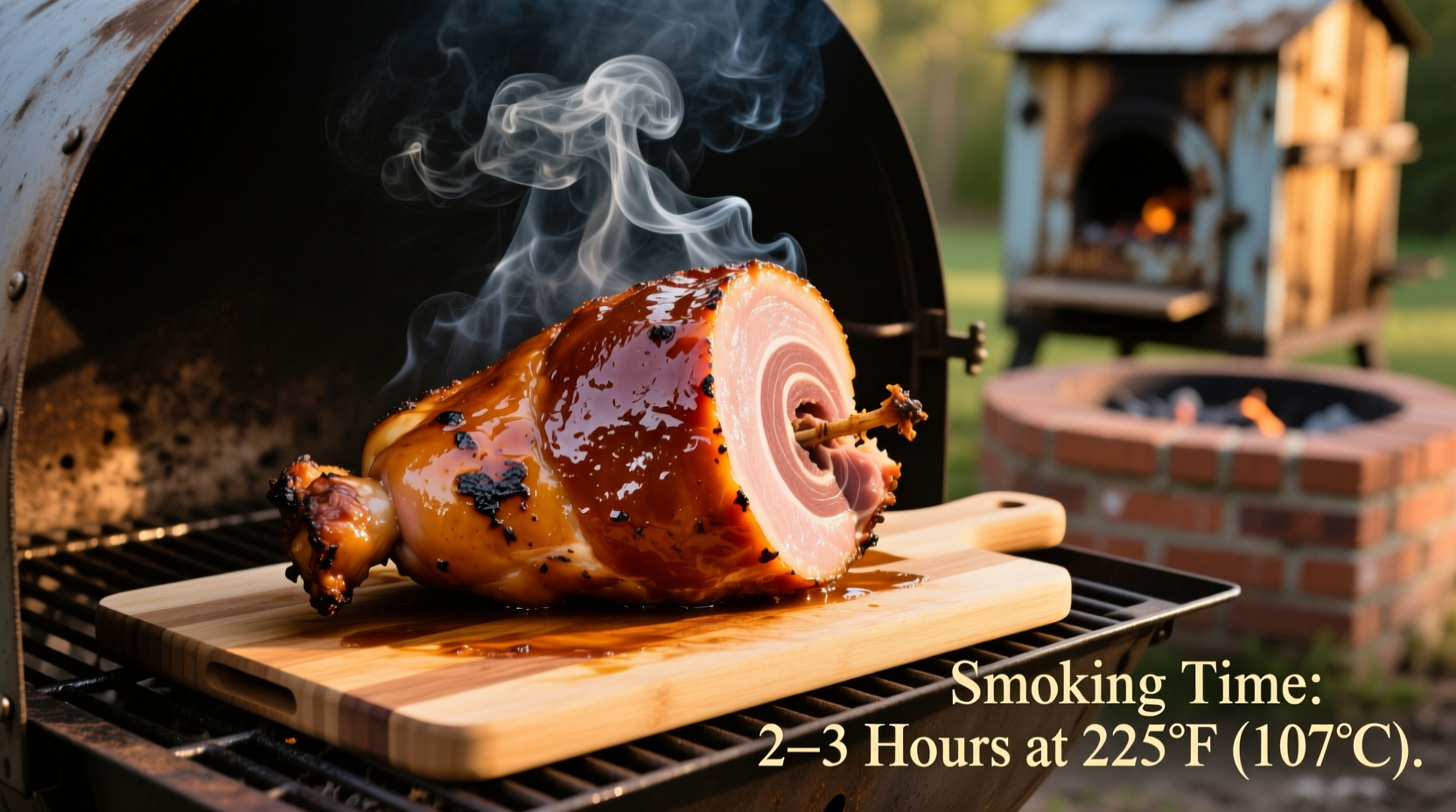Smoking a pre-cooked ham transforms an ordinary holiday centerpiece into something extraordinary, but timing is critical. Unlike raw meats that require thorough cooking, your smoked ham only needs gentle reheating while absorbing that signature smoky flavor. Getting this wrong can turn your centerpiece into dry, tough meat—a holiday disaster no one wants.
Why Smoking a Cooked Ham Requires Different Approach
Most home cooks don't realize that smoking a fully cooked ham isn't about cooking it through, but rather reheating it while infusing additional flavor. The USDA confirms that properly processed hams are safe to eat straight from the package, making the smoking process purely for flavor enhancement and texture improvement.
"Many people treat smoked ham like raw meat and leave it on too long," explains Antonio Rodriguez, culinary expert with Michelin-starred kitchen experience. "The critical mistake is not monitoring internal temperature. You're reheating, not cooking, so precision matters more than duration alone."
Pre-Smoking Preparation Checklist
Before your ham hits the smoker, proper preparation prevents common pitfalls:
- Choose the right ham - Opt for "fully cooked," "ready-to-eat," or "city ham" varieties (avoid "fresh" or "cook-before-eating" labels)
- Remove packaging - Discard any plastic coverings but keep the bone-in for better moisture retention
- Score the surface - Make shallow diamond cuts through the fat cap to help render fat and absorb smoke
- Apply dry rub - Use a simple blend of brown sugar, paprika, garlic powder, and black pepper (avoid salt-heavy rubs since ham is already cured)
Smoking Timeline: Temperature vs. Time
Unlike raw meats where time-per-pound is the primary guide, internal temperature is your true indicator for cooked ham. The following table provides estimated timing based on standard conditions:
| Ham Weight | Smoker Temp | Target Internal Temp | Approximate Time | Key Monitoring Point |
|---|---|---|---|---|
| 5-7 lbs | 225°F | 140°F | 2-2.5 hours | Check after 90 minutes |
| 8-10 lbs | 225°F | 140°F | 2.5-3 hours | Check after 2 hours |
| 5-7 lbs | 250°F | 140°F | 1.5-2 hours | Check after 60 minutes |
| 8-10 lbs | 250°F | 140°F | 2-2.5 hours | Check after 90 minutes |
Note: These times assume consistent smoker temperature and room-temperature ham placement. Always verify with an instant-read thermometer.
Wood Selection: Flavor Without Overpowering
Choosing the right wood matters significantly when smoking already-cooked ham. Unlike brisket or pork shoulder that can handle strong woods, ham requires milder options:
- Apple or cherry wood - Provides subtle sweetness that complements ham's natural flavor (ideal for beginners)
- Pecan wood - Offers nutty notes without overwhelming the delicate meat
- Avoid hickory or mesquite - These strong woods can make cooked ham taste bitter
For optimal results, use wood chunks rather than chips when smoking cooked ham. Chunks provide longer, more consistent smoke without the risk of over-smoking that can occur with chips' intense initial burst.

Critical Temperature Boundaries You Must Respect
Understanding the temperature danger zone for already-cooked products is essential for both food safety and quality:
- Never exceed 250°F - Higher temperatures rapidly dry out the ham's exterior before the center reaches proper temperature
- Minimum safe temperature is 140°F - USDA Food Safety and Inspection Service recommends this as the safe reheating temperature for cooked meats
- Avoid the 120°F-140°F zone for extended periods - This is where bacteria multiply fastest according to USDA guidelines
- Never go above 145°F - This begins the rapid moisture loss phase for cured meats
Finishing Techniques for Perfect Results
The final 30 minutes make or break your smoked ham experience:
- Apply glaze during last 30 minutes - Use maple syrup, brown sugar, or honey-based glazes (avoid acidic glazes like pineapple early in the process)
- Wrap in foil for last 15 minutes - Creates steam environment that locks in moisture while allowing glaze to set
- Rest before slicing - Let the ham rest 15-20 minutes after removal from smoker (internal temperature will rise 5-10°F during this time)
Troubleshooting Common Smoking Mistakes
Even experienced smokers encounter these issues with pre-cooked hams:
- Dry, tough texture - Usually caused by exceeding 250°F or smoking too long. Solution: Next time, reduce temperature and check internal temp earlier.
- Bitter smoke flavor - Results from incomplete combustion (smoldering instead of clean burn). Solution: Ensure proper airflow and use dry wood.
- Exterior too dark - Occurs when glaze is applied too early. Solution: Wait until final 30 minutes for glazing.
- Uneven heating - Common with bone-in hams. Solution: Position bone side down during smoking for more even heat distribution.
When NOT to Smoke a Cooked Ham
Not all hams benefit from smoking. Avoid smoking if:
- The ham is labeled "water added" (typically contains 10-20% water solution)
- You're using a spiral-cut ham (excessive drying will occur)
- The ham has already been smoked (double-smoking creates overpowering flavor)
- You lack temperature control (smokers that fluctuate more than ±25°F)
Traditional Smoking Methods Timeline
While modern electric smokers offer precision, understanding traditional methods provides context for today's techniques:
- Pre-1800s: Hams smoked for preservation using hardwoods in smokehouses for weeks
- Early 1900s: Commercial curing processes reduced smoking time to days
- Mid-1900s: Liquid smoke introduced, decreasing traditional smoking prevalence
- 2000s-Present: Home smoking resurgence focuses on flavor enhancement rather than preservation, with precise temperature control
Today's approach to smoking cooked ham represents the evolution from preservation necessity to culinary enhancement—a transformation that puts temperature control at the forefront of success.
Pro Tips for Consistent Results
Professional pitmasters use these techniques for foolproof smoked ham:
- Place a water pan in your smoker to maintain humidity (prevents drying)
- Use a probe thermometer with alarm to monitor internal temperature without opening smoker
- Start with ham at room temperature (cold ham extends smoking time unnecessarily)
- For extra moisture, inject a simple solution of apple juice and maple syrup before smoking











 浙公网安备
33010002000092号
浙公网安备
33010002000092号 浙B2-20120091-4
浙B2-20120091-4